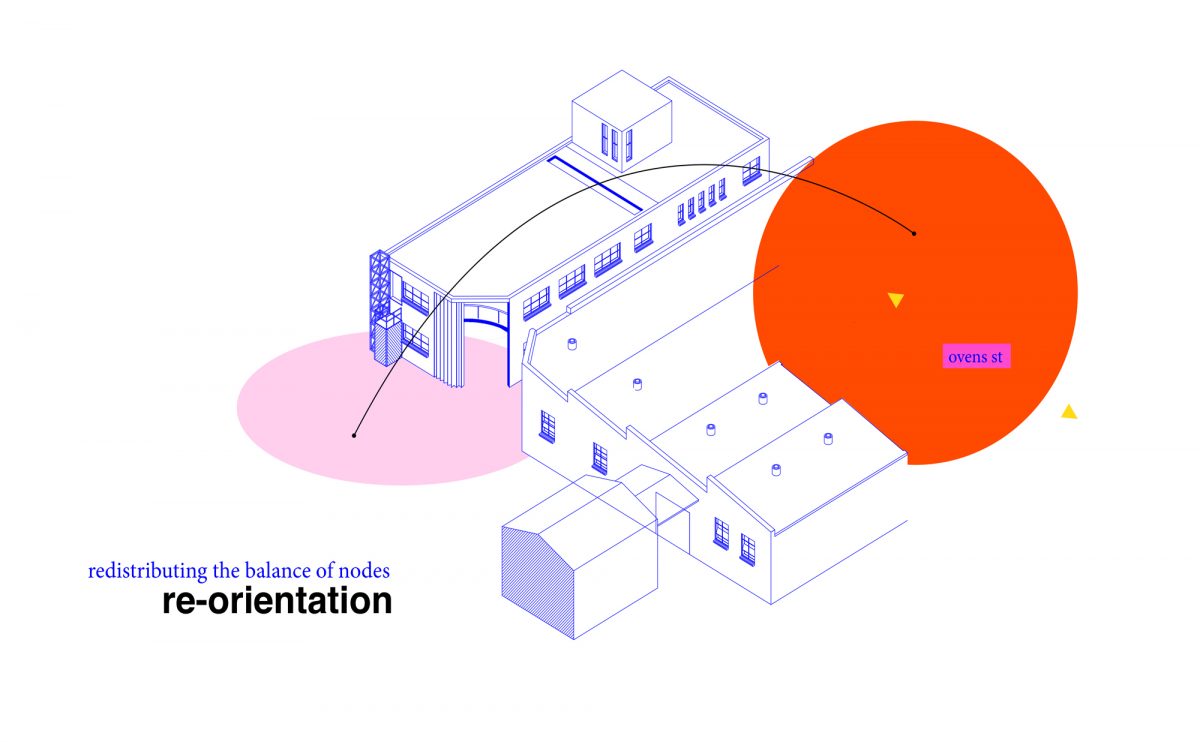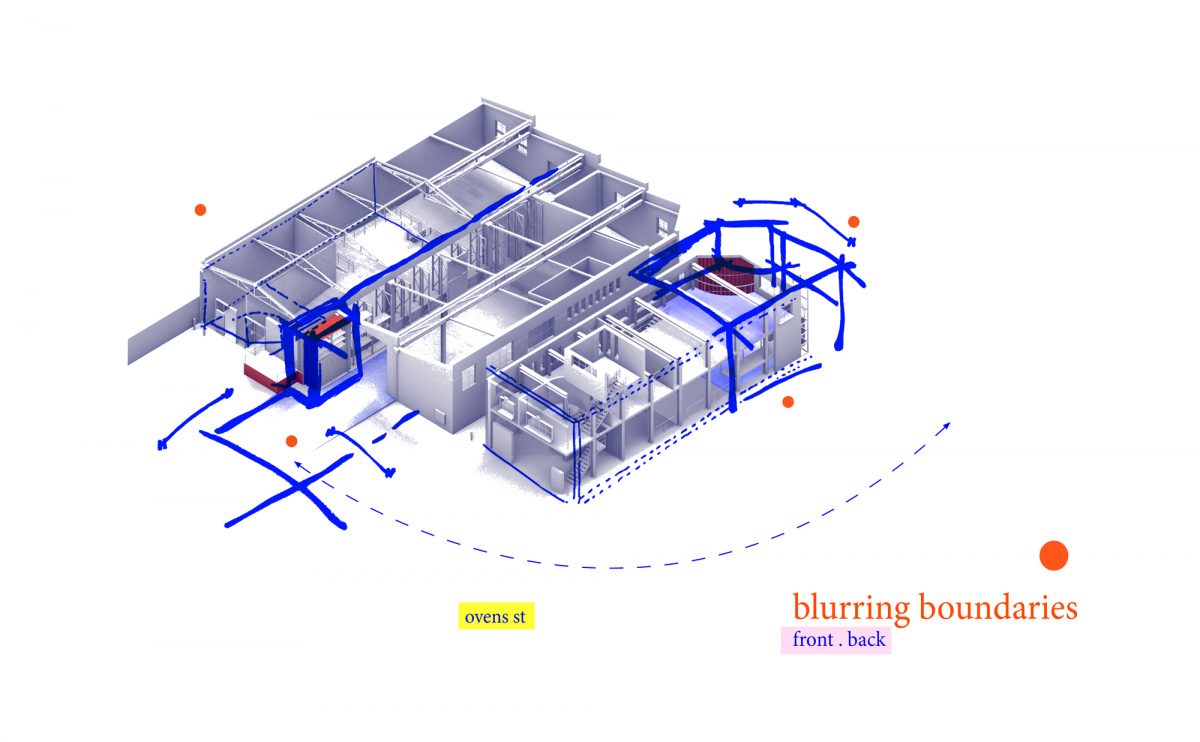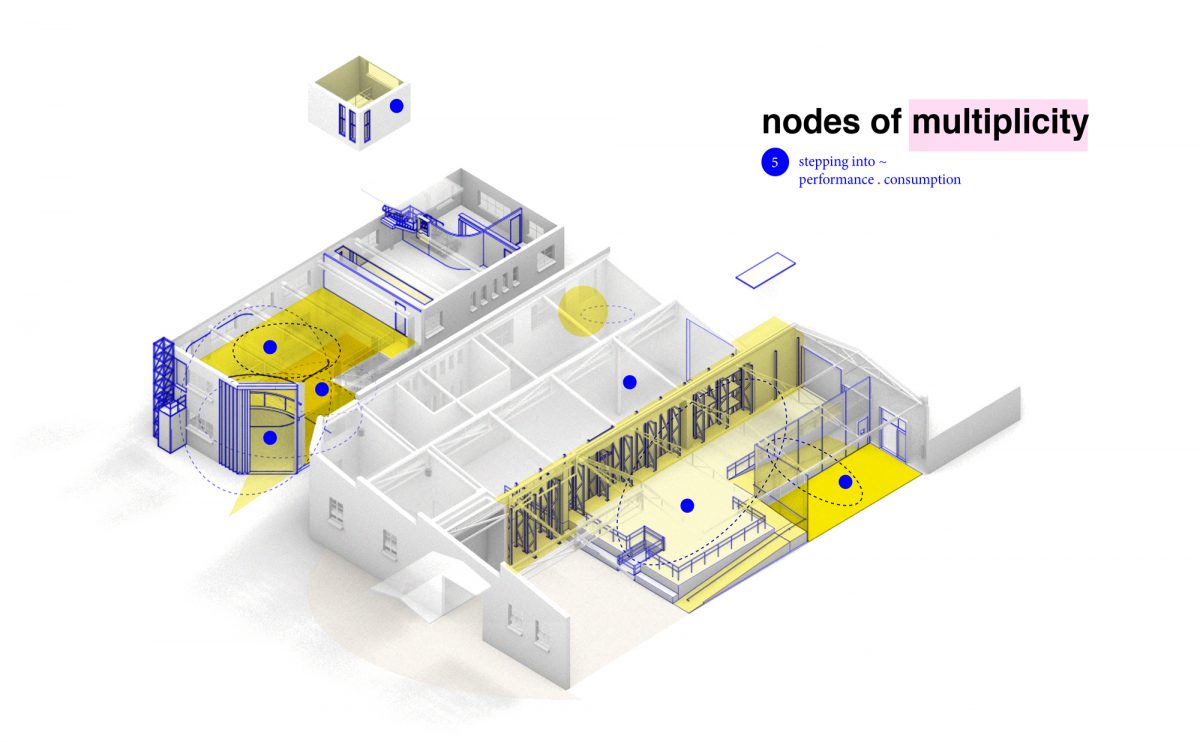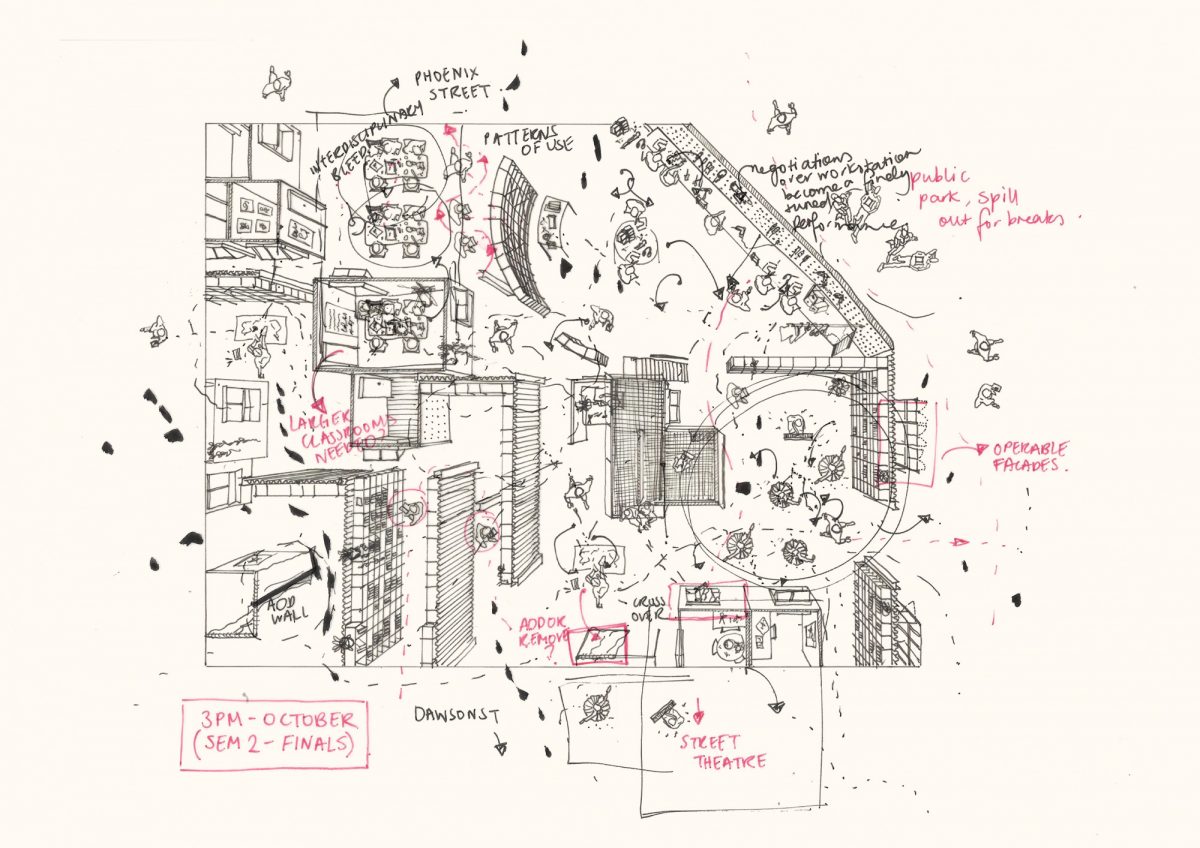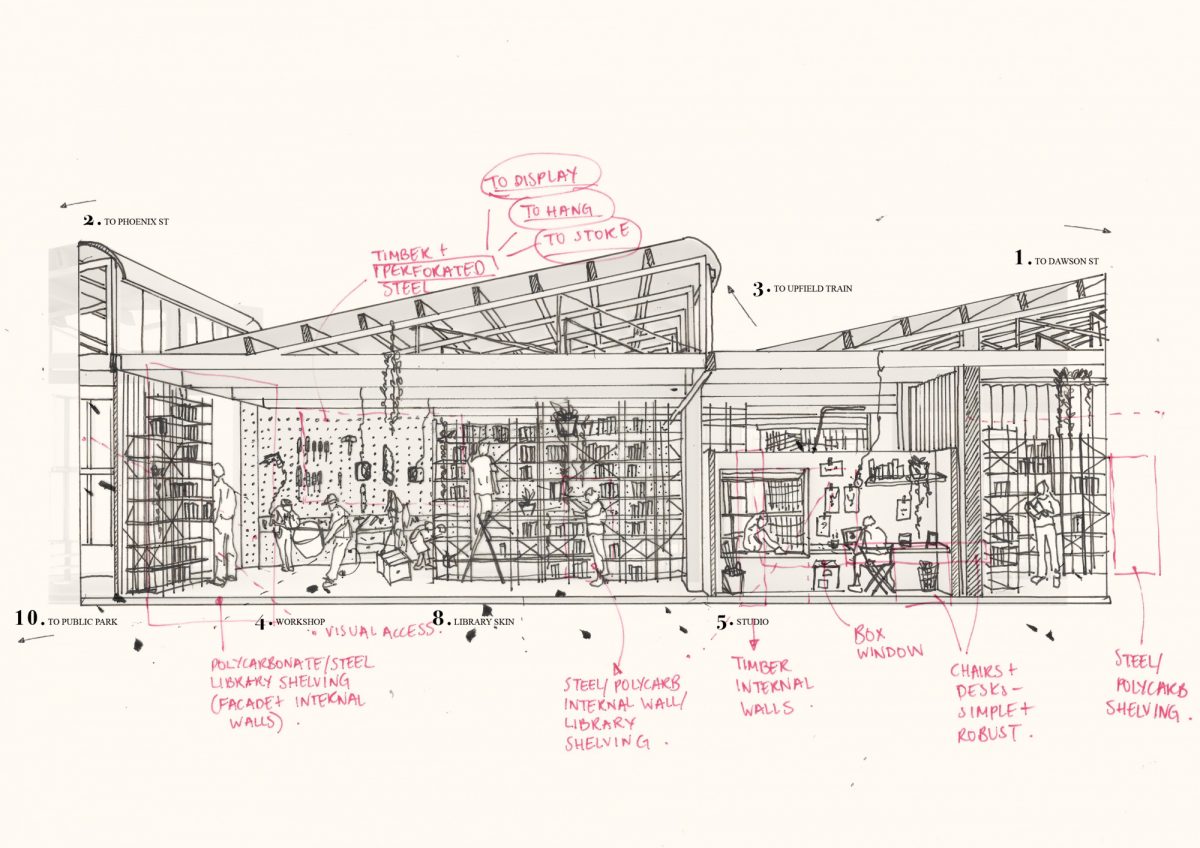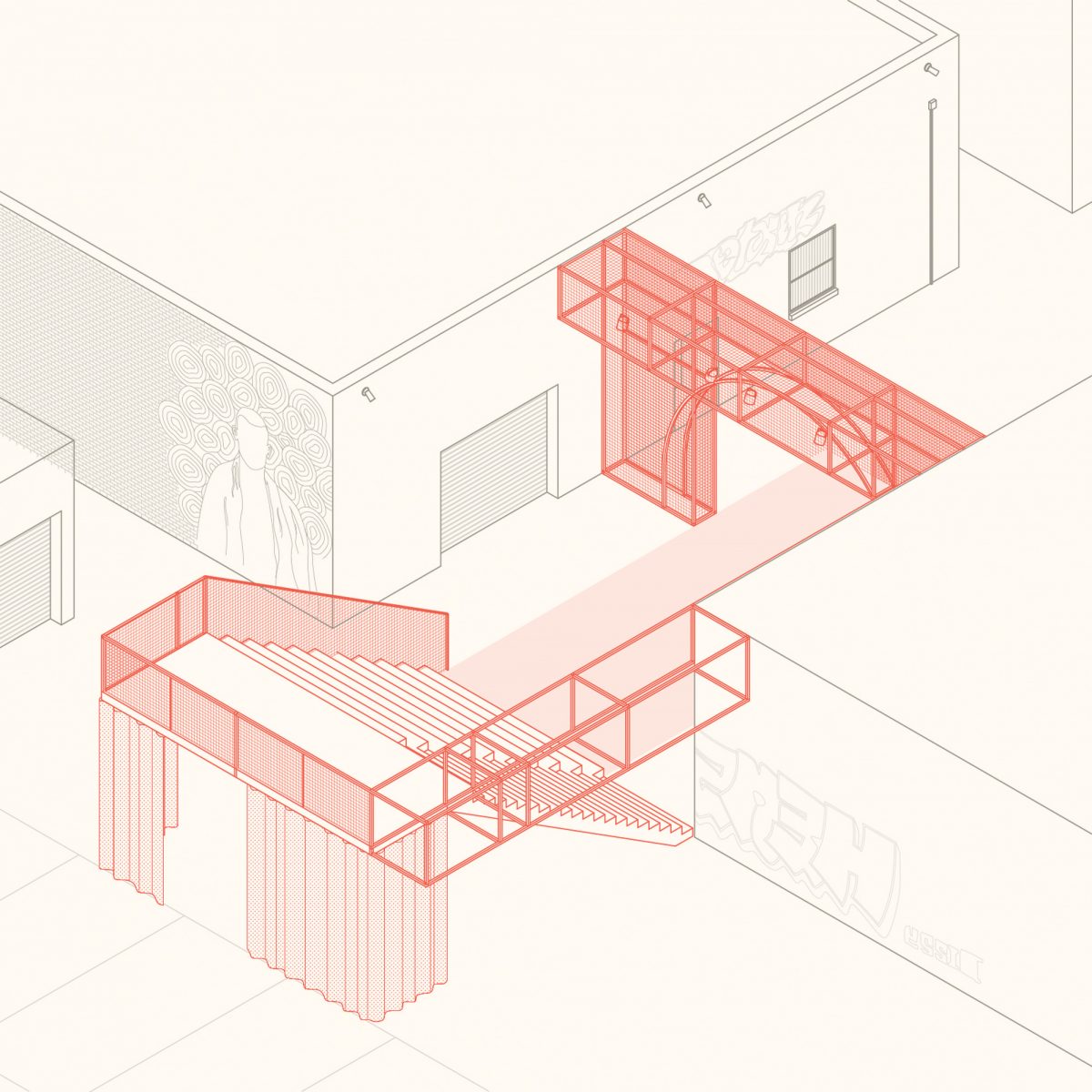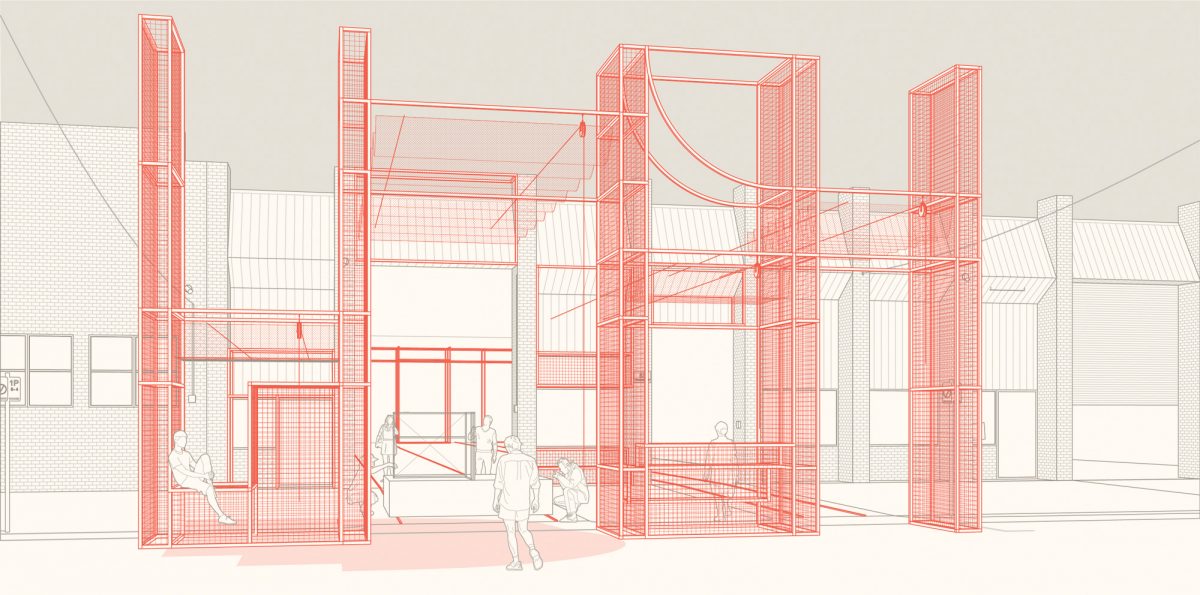Prototyping the future of Brunswick’s public space

Across Brunswick, the ghosts of industries past collide with new forms of cultural production. Artists, designers and creators of all types work out of large factories; their workshops, spilling out onto the street, create a neighbourhood in motion. But as in all suburbs, progress here is inevitable. The question is, how can Brunswick change without losing what already exists?
In 2019, RMIT University, Moreland City Council and the Victorian State Government (Creative Victoria) signed a memorandum of understanding to develop a vibrant ‘design district’ in the heart of Brunswick. Responding to this, Millie Cattlin and Mark Jacques, designers and teachers at RMIT University’s School of Architecture and Urban Design, ran studios to provoke their students to think about design differently. For Cattlin and Jacques, the urbanist who thinks only in large scales is obsolete. The time for designing ‘instant cities’ is over. Their approaches advocate for small design interventions that rejuvenate what already exists, rather than replacing it with something new. Each student started with existing spaces of creativity and manufacturing, observing existing connections and drawing into these, rather than erasing them. We selected the work of a few of the students to highlight alongside their thoughts on the futures of Brunswick.

Catherine Hucker (above)
Bachelor of Interior Design (Honours), RMIT University
The connection between Brunswick’s industrial buildings – of performance, collaboration and production – reinforces them as active and alive. My project protects and amplifies the value of these buildings and the creativity they foster. Shown in this drawing, Ovens Street in Brunswick has many light industrial buildings, each one part of a bigger network, all interacting and connecting with one another.
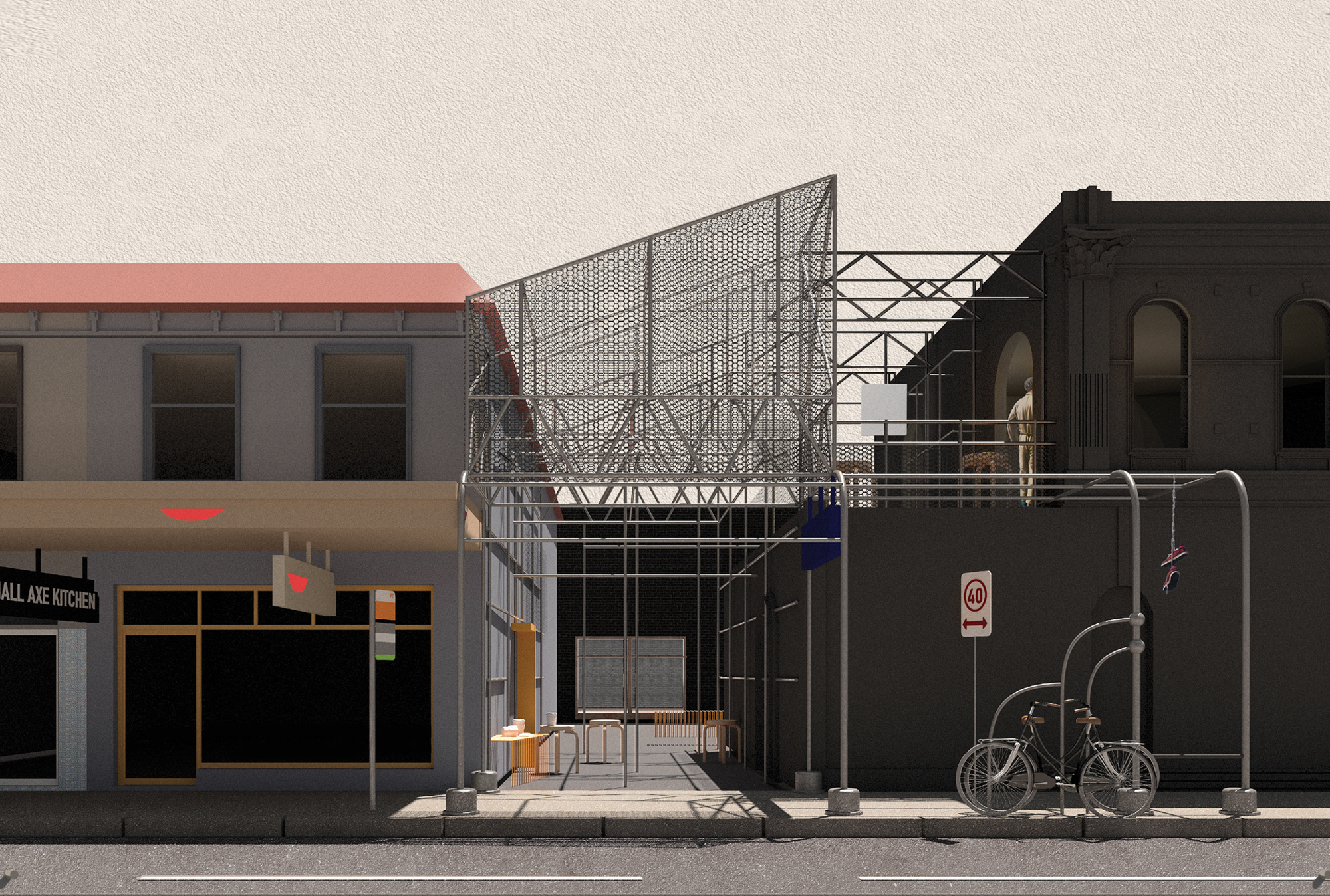
Geun Yu Kim and Abigail Liew (above)
Master of Architecture, RMIT University
Sydney Road has always been a place of making. Our project aims to rethink the street through small interventions that allow people to discover and explore, negotiating between the old and new. Through this research, we discovered that our architecture did not need to be big or expensive but could be as subtle and easy as the layering of fresh paint on a wall. Our structural intervention honours the art deco Padua Theatre, built on Sydney Road in 1937 and torn down in 1982. The structure is like a stage, or a blank canvas, for anyone to use.
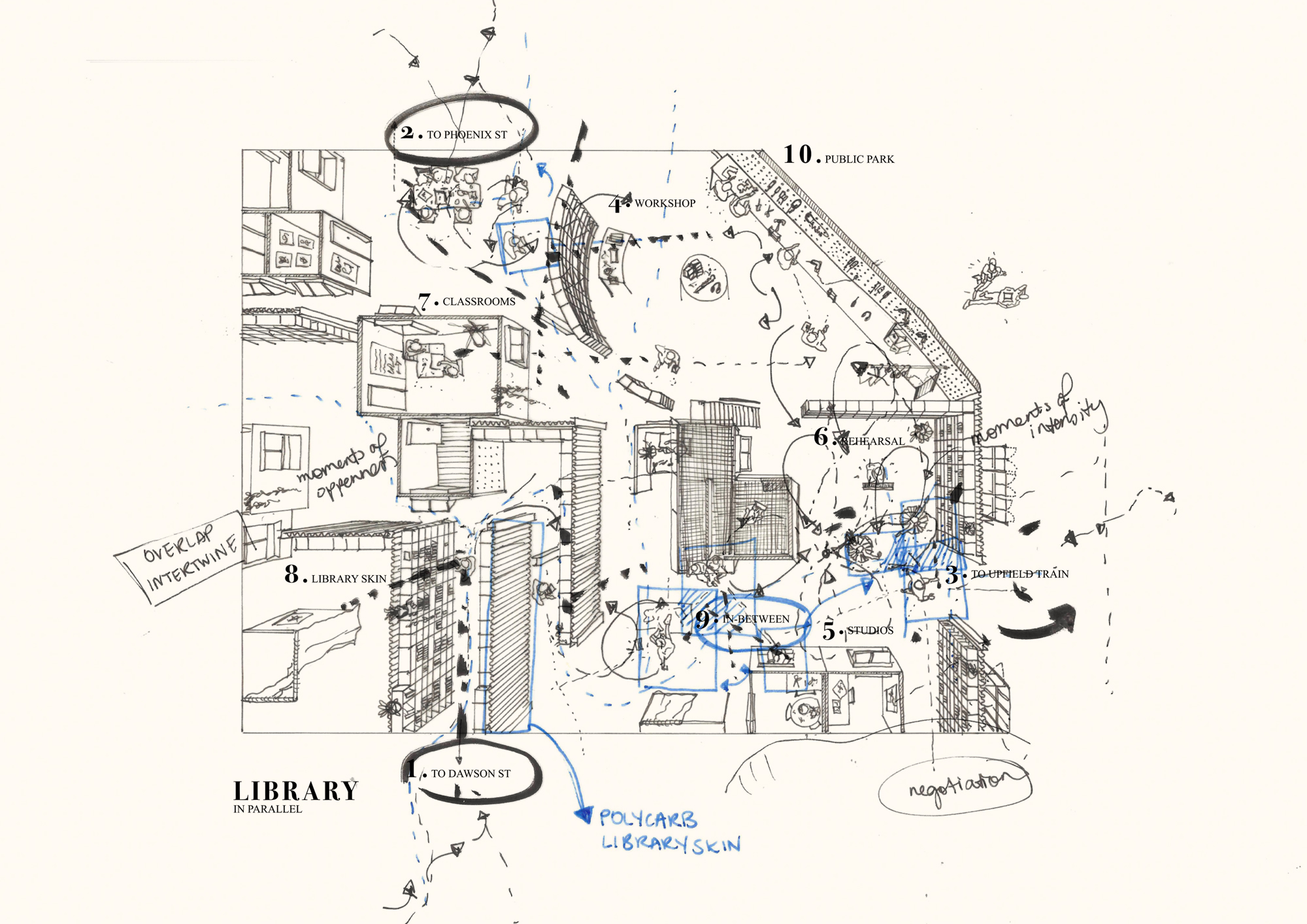
Tori Dinardo (above)
Bachelor of Interior Design (Honours), RMIT University
The RMIT Brunswick campus could bleed into Brunswick to create a public space shared among students, professionals, teachers, researchers and the Brunswick community. People inhabit the building, but they also live with it and learn from it, and it learns from them. Seen here, the campus library connects Dawson Street to Phoenix Street. The campus enables the design of radical futures, and becomes a way to experiment with the process of negotiation between private and public.
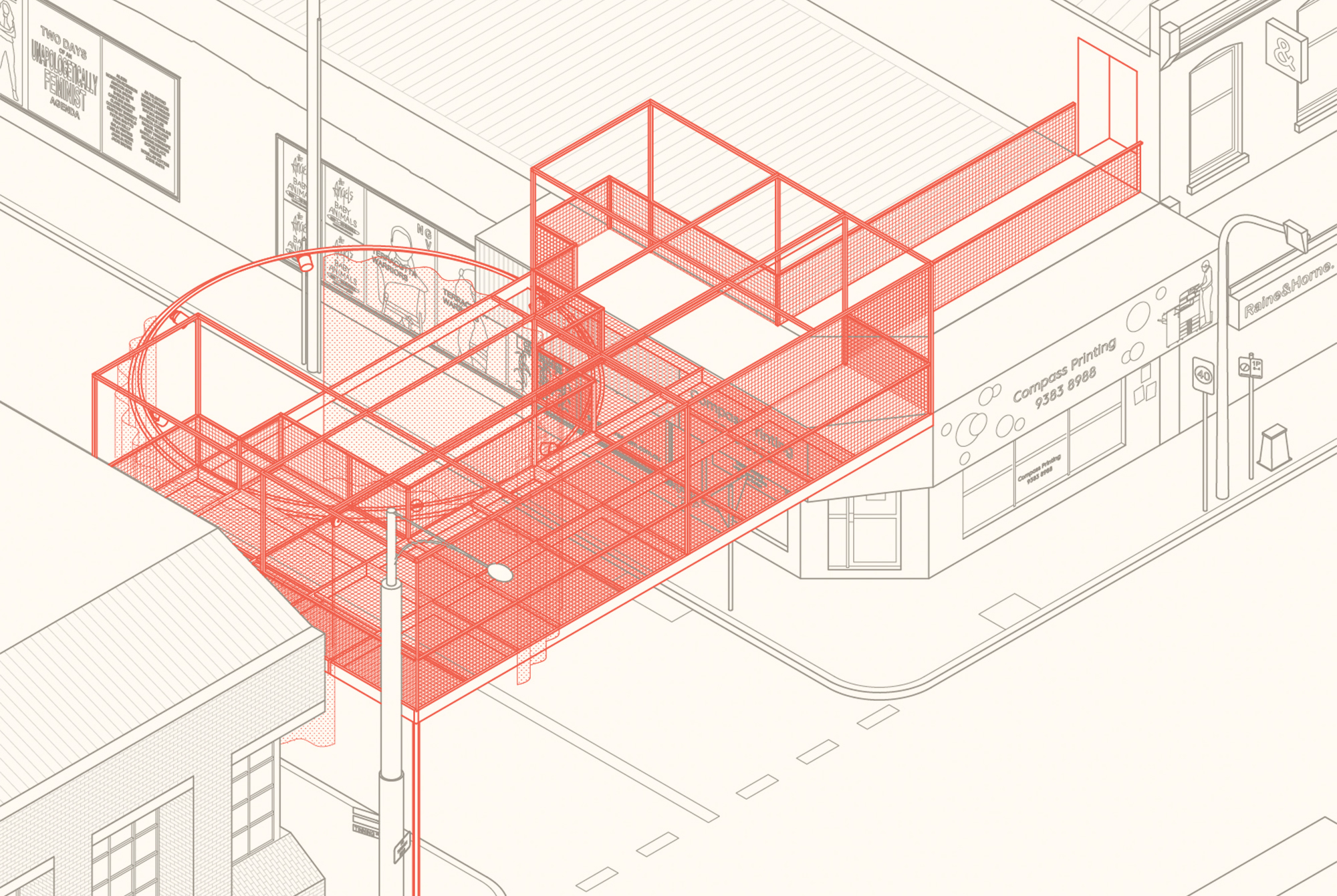
Belinda Smole (above)
Master of Architecture, RMIT University
Brunswick is characterised by production and abundance, made up of past industries that initially arose from the natural resources in the area. Many sites include remnants of equipment like conveyor belts, supply lifts and cranes. My proposal brings the process of making at the RMIT Brunswick campus to the street to engage the public at all stages of design. Continuing the rhythm of Sydney Road, this structure enables a dialogue between the street and the design process by integrating pulleys, counterweights and a curtain to allow for a flexible set up that can also host talks, events and workshops.
This piece is part of Assemble Papers 13 Mind the Gap, published at the beginning of February 2021. Find the print version of Mind the Gap at cafes across Melbourne, or order a copy from our webshop and pay only postage costs.
